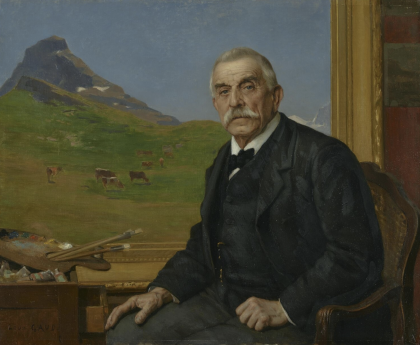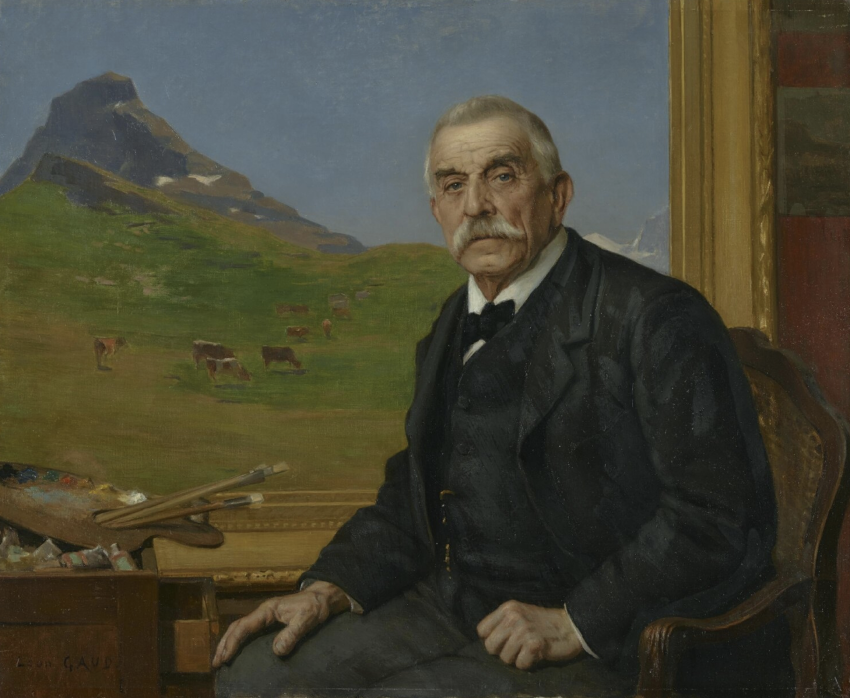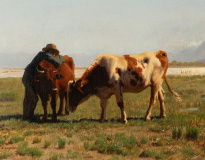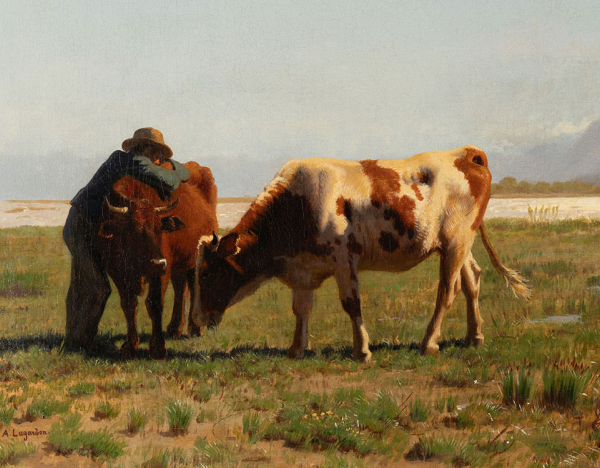Lugardon Albert
( 1827-1909 )
Biography


A Swiss painter, lithographer, and photographer, Albert Lugardon was born in Rome in 1827 into a family of artists. His father, Jean-Léonard Lugardon (1801–1884), was a distinguished history painter trained in Paris under Antoine-Jean Gros and a close associate of Ary Scheffer. At an early age, Albert moved with his family to Geneva, where he received his first artistic training from his father.
He later continued his studies in Paris, at the École des Beaux-Arts, where the teaching of Ary Scheffer had a lasting influence on his style. By the mid-19th century, Lugardon had established himself as a painter of Alpine landscapes and animal scenes, combining poetic realism with careful observation. His painting Pâturage (Pasture) earned him a distinction at the Paris Salon of 1855, confirming his talent as a master of mountain landscapes.
Deeply attuned to nature, Lugardon sought to convey the grandeur of the Swiss Alps and the shifting light of high-altitude scenery. His clear palette, strong sense of composition, and precision of line reflect a rigorous study of reality tempered by a romantic sensibility inherited from the previous generation.
Fascinated by the technical advances of his time, Lugardon developed an early interest in photography. He conducted research on instantaneous photography and the study of movement, and in 1881 received a medal from the Photographic Society of London for his experiments. His use of photography as a preparatory tool for painting, however, provoked debate among his contemporaries, some of whom considered it contrary to the academic tradition of drawing from life.
Beyond his artistic practice, Lugardon played an active role in Geneva’s cultural life. He served on the committee of the Société des Amis des Beaux-Arts and on the Commission des Beaux-Arts de Genève, contributing to the promotion of Swiss artists and the advancement of landscape painting.
He exhibited at major venues, including the Paris Universal Expositions, where his work was well received by both the public and critics. Toward the end of his life, in an act of generosity, Lugardon arranged for the posthumous sale of his and his father’s works to benefit the Hôpital Cantonal de Genève.
Albert Lugardon died in Geneva in 1909. His work, marked by precision of observation and a profound harmony between humanity and nature, stands as one of the most sensitive expressions of the Alpine landscape tradition in 19th-century art.
93400 Saint-Ouen sur Seine

